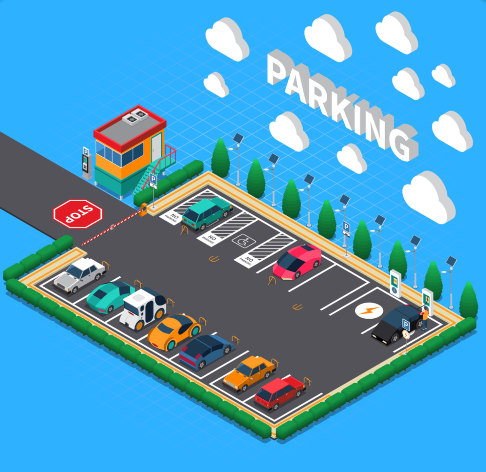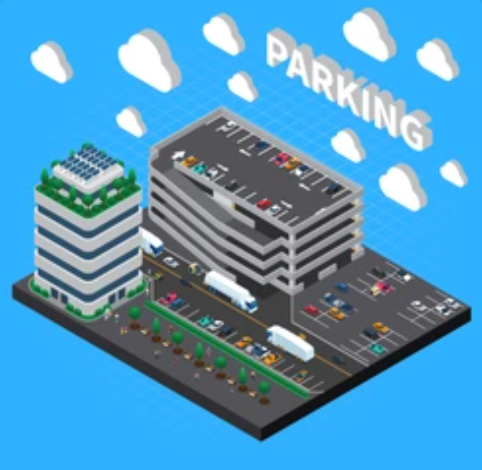Perpendicular Parking

Perpendicular Parking
If you went out driving around an average city or town, you would likely see many parking lots, whether they are next to a mall or apartment block, or even in a park or in front of a restaurant. Many of these spaces require perpendicular parking. Knowing this technique is essential for all drivers.
The Canadian Oxford Dictionary defines perpendicular as being “at right angles (to a given line, plane, or surface). With this style of parking, drivers move their vehicles into position side by side, often pulled up with one end facing a curb or the side of a building. Here, the term “perpendicular” refers to the position of the vehicle in relation to the line or surface. Sometimes, vehicles park against a curb or other barrier, while at other times, the spaces are marked only by lines on the pavement.
Where Perpendicular Parking is Common
As the Parking.net website notes, perpendicular parking is especially common in parking garages and bays, where space is limited. Perpendicular parking can be a very efficient way of fitting large numbers of vehicles into relatively small spaces.
At times, perpendicular parking can be easy. In a fairly empty parking lot, the driver can simply pull into the spot, making sure that the edges of the vehicle are within the lines painted on the pavement. This technique is easier in a small car than in a truck or other large vehicle, but it can work for anyone.

In many cases, however, drivers need to fit their vehicles in between other cars, trucks, or vans. The Alberta.ca website has guidelines for accomplishing this move easily and efficiently. When the front bumper of the moving vehicle is even with the outside edge of the nearest parked vehicle, the driver should make a sharp turn to the appropriate side, checking to be sure that enough space remains on the left and right to allow drivers and passengers to open their doors without fear of scraping them against the sides of the vehicle.
At times, perpendicular parking can be easy. In a fairly empty parking lot, the driver can simply pull into the spot, making sure that the edges of the vehicle are within the lines painted on the pavement. This technique is easier in a small car than in a truck or other large vehicle, but it can work for anyone.
Finding a Perpendicular Parking Spot
While moving into the spot, the driver should be sure to centre the vehicle in the space, assuming that other drivers have not gone over the lines of their own spaces. That way, the vehicle doors are less likely to scrape against each other and cause damage. If possible, drivers should look for a space on the left side of the road rather than on the right, as the vehicle will then be closer to the correct angle for pulling in smoothly.
In parking lots, it is often possible for drivers to pull through one space and stop on the space in front of it. When this happens, drivers should take advantage of the opportunity as it allows them, on leaving, to pull out directly from the parking space without the dangers of backing up. Reversing out of a perpendicular parking stall is often the most dangerous part of the whole procedure, as it can be very difficult to see what is behind the vehicle.
Backing into a Perpendicular Parking Spot
Because backing out of a perpendicular parking space can be problematic, a better option may be to back into it. Besides making it easier to leave the space later on, it gives vehicle occupants the chance to get access to anything in the trunk without the danger of being hit by a passing vehicle. Although the initial process of backing into the space has its challenges, this technique is worth the trouble to learn.
According to the Driving Tips website, backing into a perpendicular parking stall is generally safer than reversing out of one since the largest blind spot in most vehicles is in the rear. Children, shopping carts, animals, or vehicles can get in the way while the driver is preparing to leave, possibly with disastrous results. Although crashes can happen even when drivers back into a parking spot, the greater visibility makes them less likely to occur.
The procedure for backing into a parking stall is much like going front first. The driver should first take note of any reference points that could serve as a guide to the vehicle’s position. Reference points could be the mirror of the next car or truck, a tree branch, or a street sign. Checking these points as often as necessary will help make the process as smooth as possible.
The next step is to move into position, remembering to turn the wheel in the direction opposite to the regular procedure for moving ahead. It can be easy to become confused, but driving slowly can help drivers avoid problems at this stage. When space and traffic flow permit, drivers may wish to move far enough away from the parking spot to be able to back into it as straight as possible.

Once the vehicle is far enough into the space, the driver should straighten out the wheel and move the vehicle into position. As always, the mirrors should not scrape against the other vehicles, and the drivers should leave enough room for the doors to open and let the occupants out. Often, drivers will need to pull out slightly, possibly more than once, to readjust the position of the vehicle. However, practice can make the process easier.
Disadvantage of Perpendicular Parking
One of the issues with perpendicular parking is the possibility of being blocked in by other vehicles. At popular events like sports games, drivers looking for space to leave their vehicles may decide to crowd in around other vehicles, or they may be directed to do so by the parking lot attendants. Driving away from some perpendicular parking situations requires either a great deal of patience or careful planning to find a spot that will not be blocked.
Perpendicular parking is a useful skill that all drivers should learn. Whether they move forward or back into the spot, drivers can become adept at fitting into these parking spaces. At malls, schools, churches, and many other locations, perpendicular parking skills can help drivers find accessible and simple places to leave their vehicles while they are away. Learning this skill should be a priority for all drivers.
